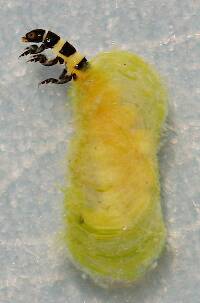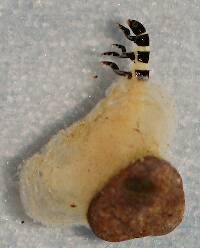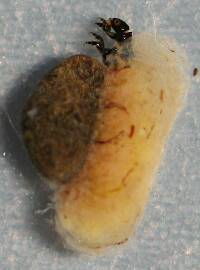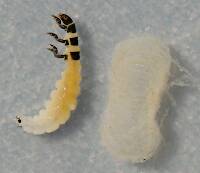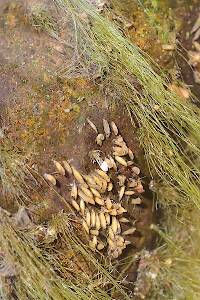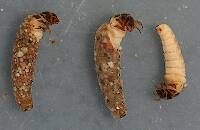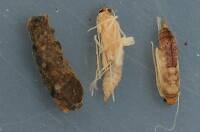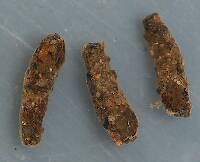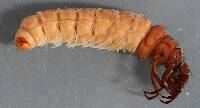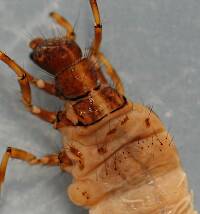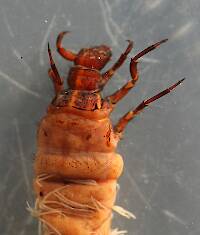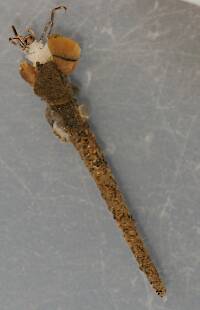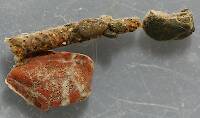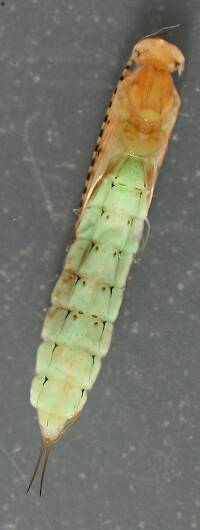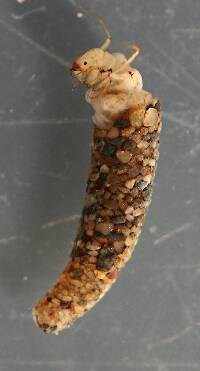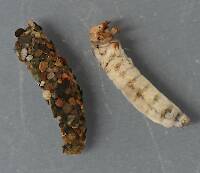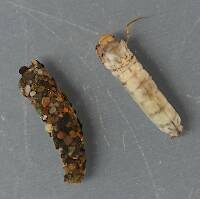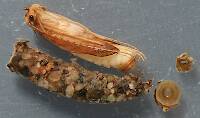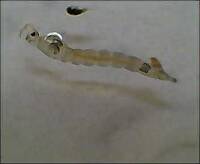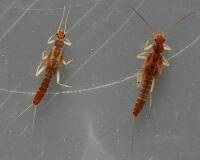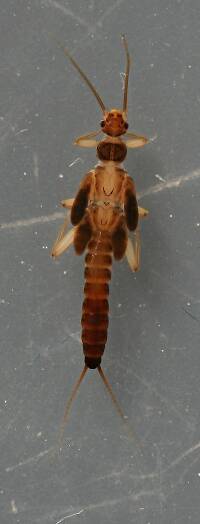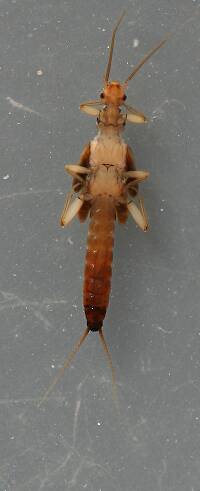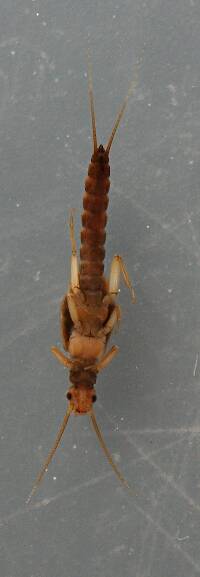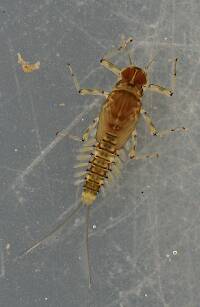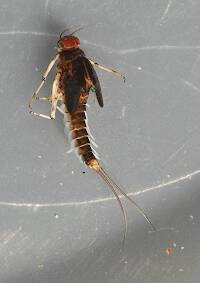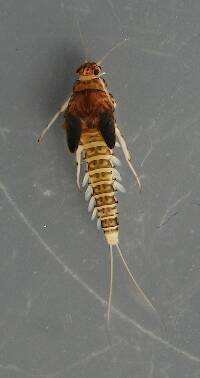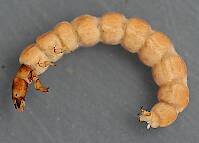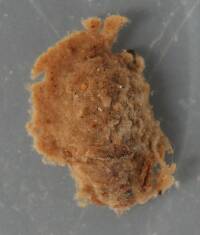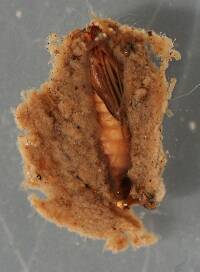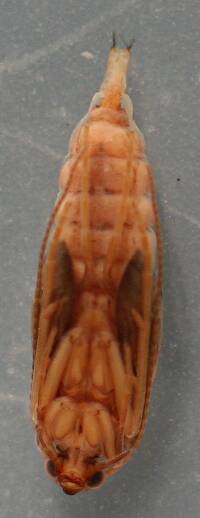
Blue-winged Olives
Baetis
Tiny Baetis mayflies are perhaps the most commonly encountered and imitated by anglers on all American trout streams due to their great abundance, widespread distribution, and trout-friendly emergence habits.
Featured on the forum

This species was fairly abundant in a February sample of the upper Yakima.

Troutnut is a project started in 2003 by salmonid ecologist Jason "Troutnut" Neuswanger to help anglers and
fly tyers unabashedly embrace the entomological side of the sport. Learn more about Troutnut or
support the project for an enhanced experience here.
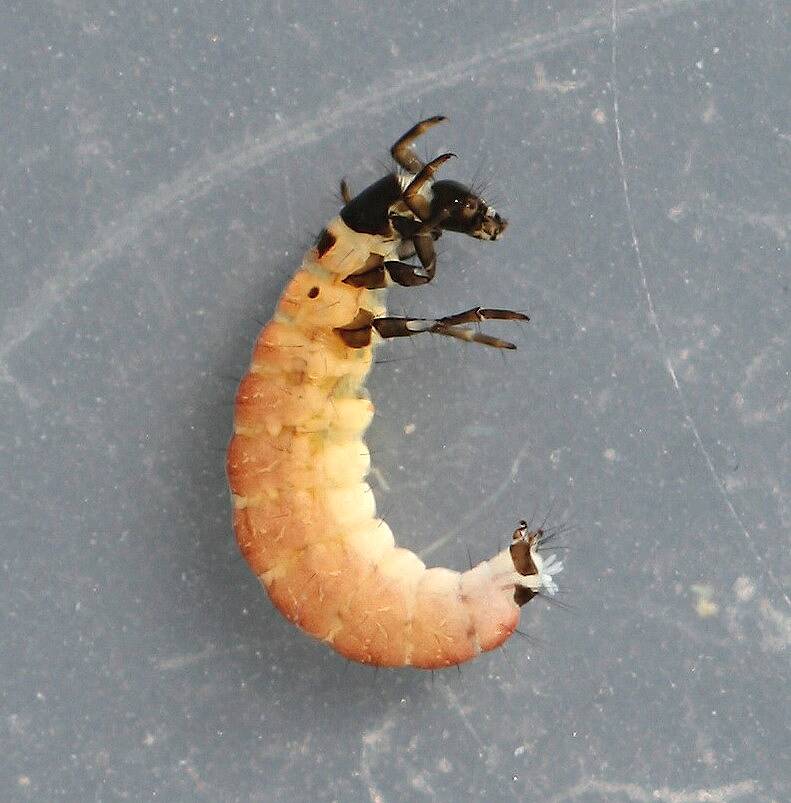
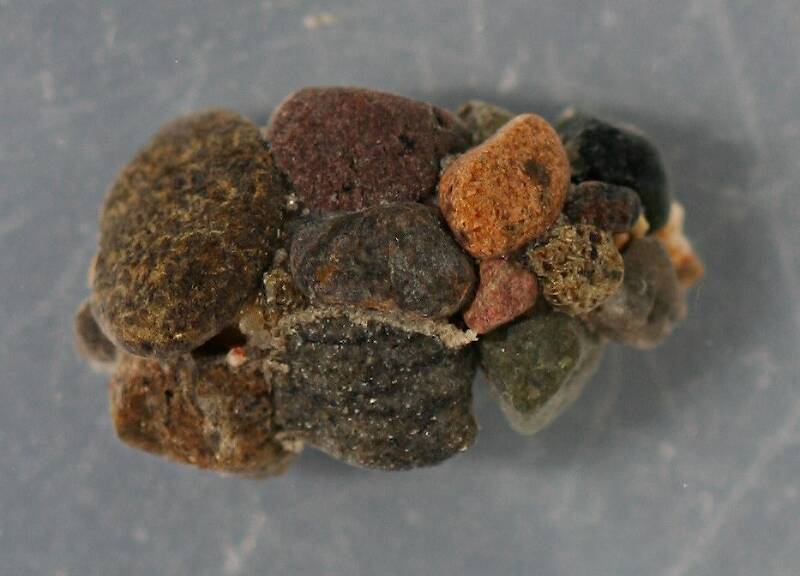
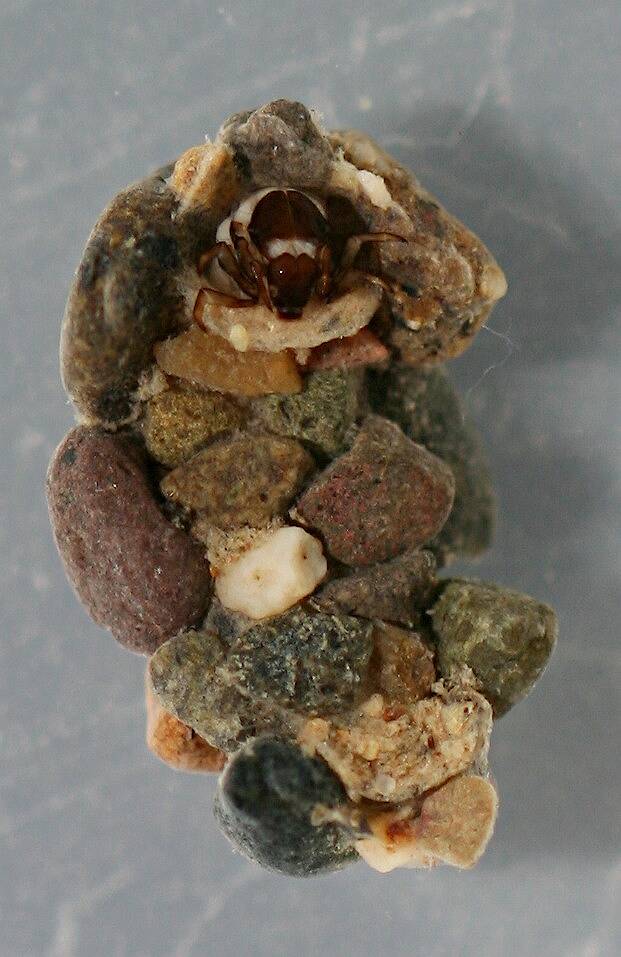
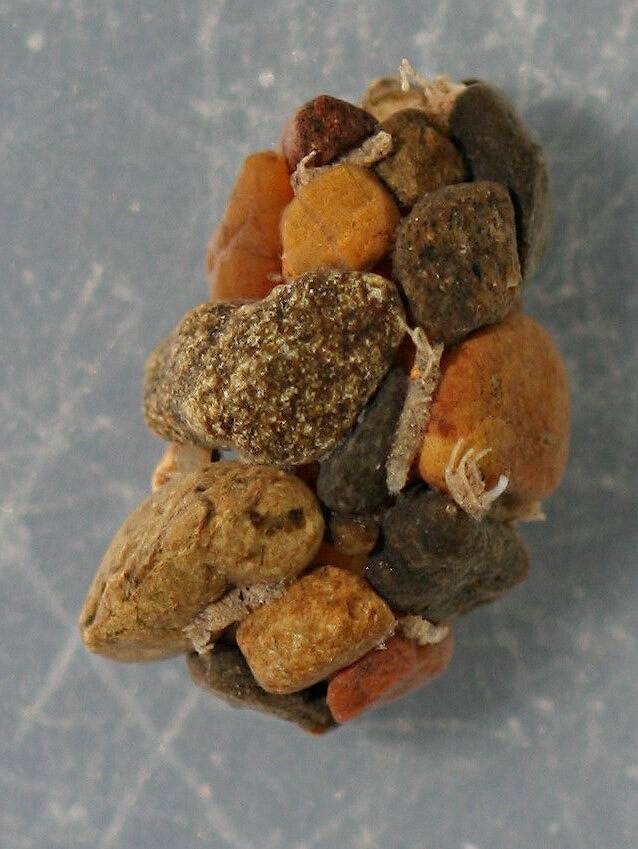

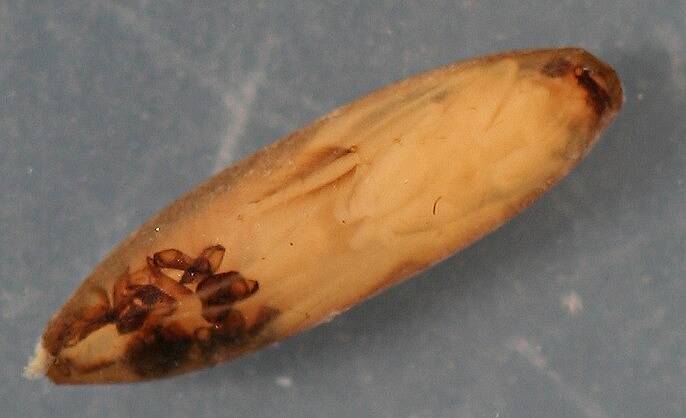
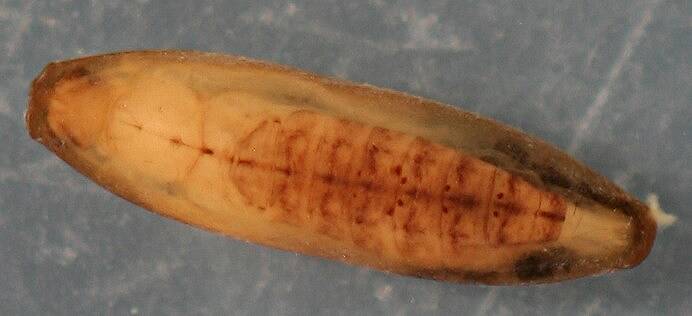
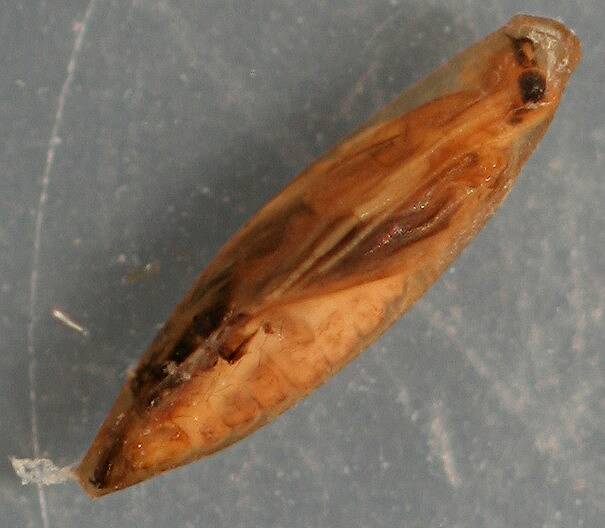
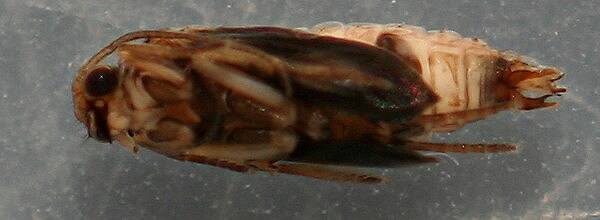

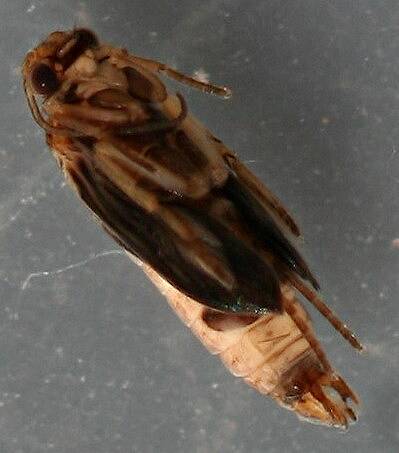
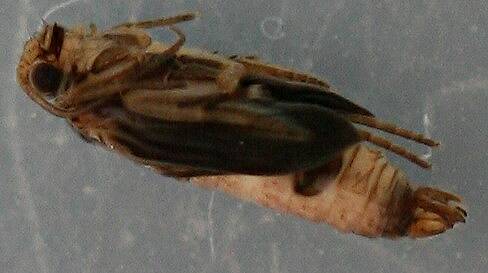
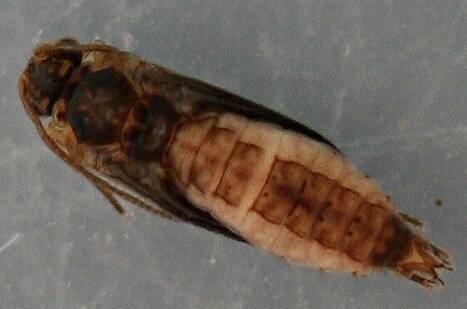
Millcreek on Oct 9, 2014October 9th, 2014, 4:36 pm EDT
Agapetus larvae are abundant in the Russian River, being most common in March and April. Usually found on top of gravel and cobble in a slow to moderate current and fairly shallow water. Pupae are found attached to the sides and tops of large gravel and cobble. Larvae were identified to genus using Merritt, Cummins and Berg (2008) and Wiggins (1996). Pupae were identified to family using MCB and identified to genus by association with the larvae.
The larval cases have a small piece of silk at each end on the ventral surface that close when the larvae is entirely inside the case. They can be seen in the photo showing the bottom of the case.
The pupal cases don't have stones on the bottom but are attached directly to the rock. There is a silk cocoon which is only attached to the case at each end, all other surfaces are unattached.
I haven't collected adults so have no idea what the species is.
EDIT - Photos of mature pupae added 7/7/15
The larval cases have a small piece of silk at each end on the ventral surface that close when the larvae is entirely inside the case. They can be seen in the photo showing the bottom of the case.
The pupal cases don't have stones on the bottom but are attached directly to the rock. There is a silk cocoon which is only attached to the case at each end, all other surfaces are unattached.
I haven't collected adults so have no idea what the species is.
EDIT - Photos of mature pupae added 7/7/15
"If we knew what it was we were doing, it would not be called research, would it?"
-Albert Einstein
-Albert Einstein
Creno on Oct 9, 2014October 9th, 2014, 6:10 pm EDT
No mature pupae? Not alot is known about the western species. Little critters that emerge early. Dave Etnier et al recently described many new species from the east. He focused on collecting early in the season.
Millcreek on Oct 9, 2014October 9th, 2014, 6:44 pm EDT
Didn't have any mature pupae in the vials I got out today. I've got a couple more sets of samples and will check for mature pupae. If I find any I'll add them to this post. Kind of got side tracked looking for Capnia umpqua at the same time these little fellows were around.
"If we knew what it was we were doing, it would not be called research, would it?"
-Albert Einstein
-Albert Einstein
Creno on Oct 9, 2014October 9th, 2014, 9:17 pm EDT
I can understand that :-)
Millcreek on Oct 10, 2014October 10th, 2014, 9:12 am EDT
Looked at the paper by Dave Etnier et al. A lot of work done there. Looks like some good info on rearing the critters. I see you have one of the Agapetus named after you, A. ruiteri. Looks like you're immortalized, at least until the next taxonomic revision.:)
"If we knew what it was we were doing, it would not be called research, would it?"
-Albert Einstein
-Albert Einstein
Creno on Jul 7, 2015July 7th, 2015, 9:04 am EDT
Nice pics as usual. Great example of the midge being carried around, and probably benefiting while not harming the caddis (commensal/phoresy). The pupae is a male and mature enough to determine to species. From here it looks close to Agapetus celatus but the dorsum is off and the proportions don't seem right.
Millcreek on Jul 7, 2015July 7th, 2015, 9:32 am EDT
I can send you a few if you'd be interested.
"If we knew what it was we were doing, it would not be called research, would it?"
-Albert Einstein
-Albert Einstein
Quick Reply
Related Discussions
Topic
Replies
Last Reply
9
Jul 7, 2015
by Millcreek
by Millcreek
2
Apr 7, 2012
by Crepuscular
by Crepuscular
1
Apr 12, 2007
by GONZO
by GONZO


